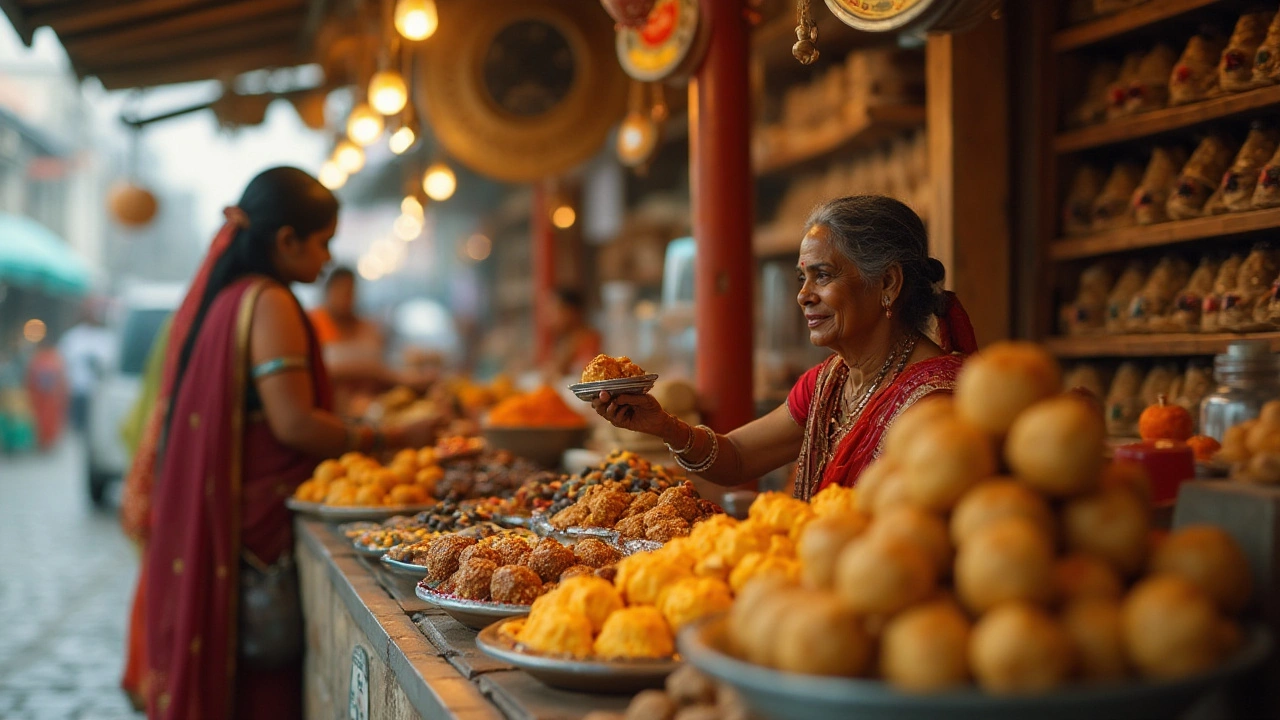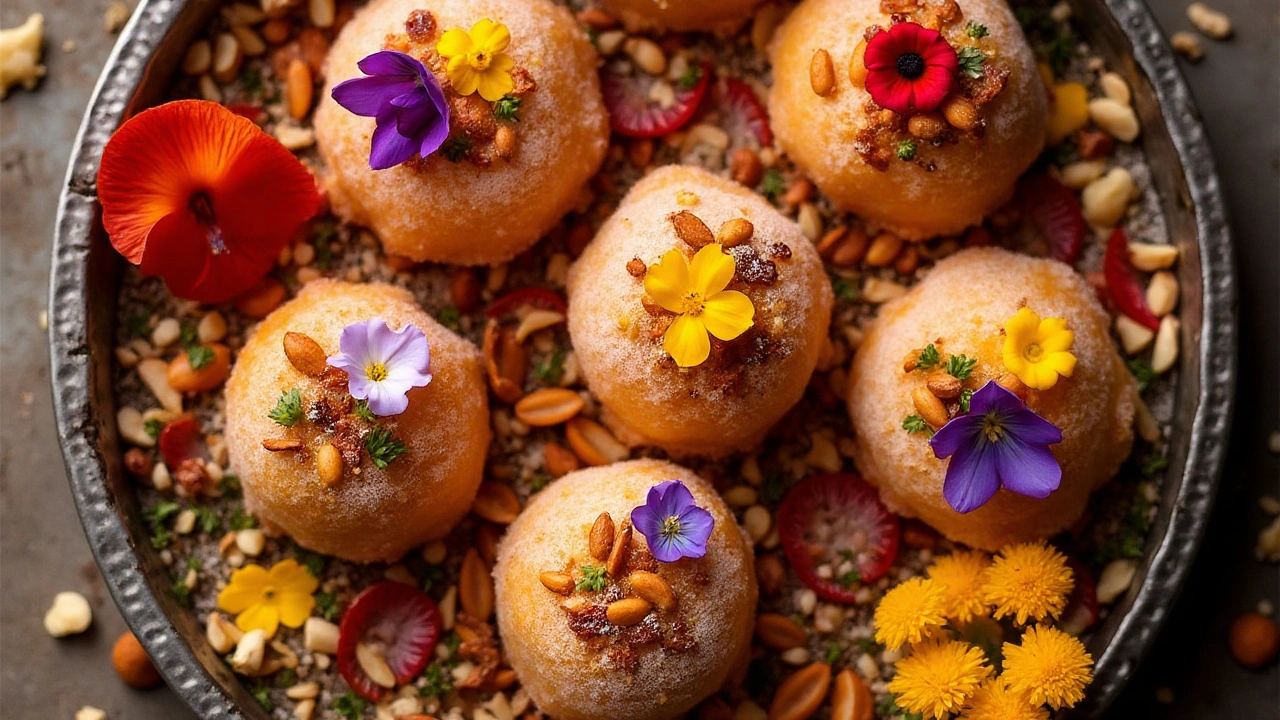Butter, a common ingredient in many desserts, has a rich history of lending flavor and texture to our favorite sweet treats. Despite its popularity, for those following a vegan lifestyle, butter is off the table. But why is this delicious kitchen staple not considered vegan?
To answer this, we need to take a closer look at what butter really is. Simply put, butter is a dairy product made by churning milk or cream to separate the butterfat from the buttermilk. This process relies on animal-derived components, making butter unsuitable for vegans who avoid animal products in their diets.
Thankfully, the culinary world is brimming with creative and delicious plant-based butter alternatives that can easily take the place of traditional butter in a dessert recipe. From rich avocado spread to creamy coconut oil and nutty almond butter, the choices are as varied as they are delightful. Discover how to transform your dessert recipes to satisfy both your palate and your principles.
- The Science Behind Butter
- Why Butter is Not Vegan
- Vegan Alternatives to Butter
- Tips for Baking Delicious Vegan Desserts
The Science Behind Butter
Butter has charmed its way into kitchens worldwide not just for its delightful taste but also for its unique properties, which start with its very creation. It all stems from a surprisingly simple process of churning, which is essentially a physical manipulation where milk or cream is agitated vigorously. This action causes the fat molecules suspended in the liquid to clump together, separating them from the water content and entrapping air, thus forming solid butter and leaving buttermilk as a byproduct. What makes butter so distinctive in cooking and baking is its composition—primarily fat—which at approximately 80%, with the remainder being water and milk solids. This high-fat content gives butter that celebrated richness and ability to carry flavors so beautifully, an essential characteristic in many recipes.
An intriguing thing about butter is its emulsion quality. Being an emulsion means butter can help mix water and fats, which are otherwise like oil and water—literally—they just don't naturally combine well. Butter's role as an emulsifier makes it essential in giving pastries their flaky layers or providing icing its smooth texture. It is this very factor that has made butter so indispensable in creating the buttery blankets for croissants or the luscious frosting on cakes. According to Harold McGee, a renowned food scientist, "The delicate interplay between the fats and water held together by butter is what lends pastries their velvety texture and delightful crumb".
Another essential feature of butter is its ability to melt at body temperature, making it a delight on the palate. Scientifically, butter transitions from solid to liquid between 82 and 97 degrees Fahrenheit (28 to 36 degrees Celsius). Interestingly, this trait places butter in a sweet spot between melting readily in your mouth without immediately melting in a room setting, providing softness but maintaining shape—perfect for spreading on warm toast or marrying with sugar in baked goods. The subtle variations in its consistency at different temperatures make butter an immensely versatile ingredient in both savory and sweet culinary uses. In baking, specifically, the right balance of butter's creamy nature against its ability to create tender, crumbly textures aligns with its water content converting to steam, puffing up doughs and creating lift in pastries. Butter truly is a miraculous marvel from a scientific perspective, boasting consistent brilliance across countless recipes, and delivering mouthfeel that enriches many classic dishes, whether as a standalone spread or a crucial cookery tool.
The Nutritional Perspective
While exploring the science of butter from a culinary angle is fascinating, it's equally interesting to look at its nutritional make-up. As predominantly a fat, butter is high in calories, with roughly 102 calories per tablespoon, making it a significant source of quick energy. It contains vitamins like A, D, E, and K, which are fat-soluble, reinforcing butter's position as a nutritional carrier. Vitamin A, for instance, plays a critical role in immune function and vision. The saturated fat in butter has been the subject of much debate—alluding to both potential benefits in moderation and cautions regarding heart health. Butter also contains trace carbohydrates and proteins, but these are negligible compared to its rich fatty nature.
Intriguingly, butter can also be considered a surprisingly complex food item when delving into its diverse fatty acid profile. It notably includes short-chain fatty acids like butyrate, linked to anti-inflammatory benefits, and medium-chain fatty acids, recognized for their quick energy boost. Yet, for those abstaining from animal products, despite butter's comprehensive nutritional offerings, it's considered off-limits in a vegan lifestyle due to its dairy origin. Thus, understanding both the culinary and nutritional science of butter paves the road for seeking out innovative plant-based alternatives that strive to mimic its beloved qualities.

Why Butter is Not Vegan
To understand why butter doesn't fit into a vegan lifestyle, we need to delve into its origins. Traditionally, butter is produced through a simple yet fascinating process that starts with milk from cows. This milk is churned to separate out the butterfat, resulting in that creamy, spreadable delight beloved by many. Yet, therein lies the rub for vegans: milk is animal-derived, thus excluding butter from a vegan diet. The central philosophy of veganism entails avoiding all animal products and by-products, not solely for health reasons, but often out of ethical concerns regarding animal welfare and environmental impact.
Many advocates for a vegan diet point to the practices of the dairy industry as a motivator for steering clear of butter. Cows, like all mammals, produce milk to nourish their young, yet many find themselves in industrial settings where their milk is harvested for human consumption. As a result, the life of a dairy cow is often centered around perpetual pregnancies and milking, which raises several ethical questions about animal treatment. Notably, Johanne Friesen, a well-known vegan activist, once said,
"Choosing a plant-based lifestyle is about reducing harm. Every conscious choice we make leads us toward a kinder world."Such stances amplify why butter, as pleasant as it may be to the taste buds, misses the mark for those committed to compassionate eating.
There are also environmental considerations to take into account. Research indicates that the dairy industry significantly contributes to greenhouse gas emissions, land degradation, and water overuse. The ecological footprint of producing dairy butter is much larger than that of its plant-based counterparts. Transitioning to butter alternatives derived from plants can be a step toward sustainability. It is estimated that by reducing dairy consumption, individuals could potentially decrease their carbon footprint, a compelling reason some choose non-dairy spreads even outside the vegan community. The complex interplay between food production, ethical choices, and environmental impact makes the case against traditional butter for those seeking to reduce their ecological impact.

Vegan Alternatives to Butter
When it comes to creating scrumptious vegan desserts without the use of traditional butter, the culinary world offers a plethora of delectable plant-based alternatives. These substitutes not only mimic the texture and creaminess of butter but can also enhance the flavor of your desserts in unexpected ways. One popular option is coconut oil, which can provide that rich fatty feel butter offers. It's solid at room temperature, making it a great choice for baking. Yet, it's essential to note its distinct flavor, which can add a tropical twist to your desserts.
Another favorite among bakers is avocado, an incredibly versatile fruit that can be mashed and used in recipes requiring butter alternatives. Its creamy texture ensures your baked goods remain soft and luscious, while its mild taste won't overpower your dish. Many swear by its ability to perfectly substitute butter at a one-to-one ratio. An added benefit? Avocado offers a dose of healthy fats and is rich in vitamins E and K, making it not just an ethical choice but a nutritious one as well.
If you're after something with a nutty undertone, almond butter might just be your best friend. It not only gives desserts a delightful taste but also introduces a dose of protein and healthy fats. Almond butter works seamlessly in recipes for cookies, cakes, and even frostings. Thin it down with a bit of melted coconut oil, and you've got a spread worthy of replacing butter. Others in the nut family, like cashew or peanut butter, can function similarly, each lending its unique taste profile.
Enter olive oil, a staple in Mediterranean diets. It might seem unconventional for dessert, but its light fruitiness can beautifully amplify the flavors in certain sweet treats. Imagine a delicate olive oil cake with citrus tones or using olive oil in a moist chocolate loaf. Olive oil is also known for its health benefits, loaded with antioxidants and monounsaturated fats, making it a favorite for many health-conscious bakers.
For those who miss the saltiness that butter often provides, margarine serves as an impeccable alternative. Modern vegan margarines have evolved enormously, now boasting all the texture of butter without the animal-derived ingredients. Many brands are now entirely plant-based, meaning they cut down on trans fats and other unhealthy components traditionally found in older margarine versions. Double-check ingredient lists, as not all margarines are vegan.
"The rise of veganism has sparked incredible innovation in the food industry," notes Ian Wilson, a culinary historian. "We've seen a surge in plant-based alternatives that rival, if not outperform, their animal-derived counterparts."
To top it off, using applesauce in cookies or brownies can lock in moisture while reducing fat content, making it a great alternative for the health-savvy baker. This doesn't just substitute butter's moisture-adding qualities but also introduces a natural sweetness that could allow a cutback on sugar in your recipes.
For clarity, here's a quick comparison of some dairy-free baking options:
| Alternative | Unique Flavor | Nutritional Benefits |
|---|---|---|
| Coconut Oil | Slightly Coconut | Healthy fats, high in lauric acid |
| Avocado | Mild, creamy | Rich in Vitamins E, K |
| Olive Oil | Fruity, light | Loaded with antioxidants |
Exploring these vegan alternatives means you're not just committing to a lifestyle choice, but opening your culinary arsenal to a range of textures and flavors. Next time you're in the kitchen, experimenting with these options might not only meet but exceed your expectations.

Tips for Baking Delicious Vegan Desserts
Vegan baking can seem like a daunting task at first, primarily because traditional recipes heavily rely on dairy and eggs to create delectable textures and flavors. However, stepping into the world of dairy-free baking doesn't mean sacrificing taste or quality. It's all about embracing the versatility of plant-based ingredients and finding clever substitutions. First, always start by choosing high-quality ingredients. The flavors in vegan desserts often shine through more distinctly, so opting for the freshest vanilla, the purest cocoa powder, and the most aromatic spices can elevate your creations to new heights.
An effective approach is to master the art of balance between moisture and leavening agents. Since you're not using eggs, which typically perform this duty, you can turn to alternatives like flaxseed meal or chia seeds mixed with water to act as binding agents. These not only hold your mixture together but also add a wholesome touch. Another trick is incorporating applesauce or mashed bananas, which not only add sweetness but also contribute necessary moisture to prevent your cake or bread from turning into a brick. More exotic substitutions like aquafaba—the liquid from canned chickpeas—give you a surprising amount of leverage with its whipping capabilities, closely mimicking the texture of whipped egg whites.
For achieving the fluffiness that butter usually provides, focusing on the chemistry of your leavening agent is essential. Baking powder and baking soda react differently with other components, so adjusting quantities can significantly impact texture. If your recipe calls for buttermilk, create a vegan version by adding a tablespoon of apple cider vinegar or lemon juice to a cup of your preferred plant milk. This simple process curdles the milk slightly, offering the tanginess and acidity that buttermilk imparts to doughs and batters.
"The key to successful vegan desserts is understanding the science of baking," says Rachel Stevens, a renowned plant-based pastry chef. "Once you know how different elements work together, you can innovate and personalize each recipe without fear."
Sweeteners play a crucial role too. While white and brown sugars are often considered vegan, some refined sugars may use animal bone char in the refining process. Opt for alternatives like maple syrup, agave nectar, or even coconut sugar to not only align with vegan values but to introduce unique flavors. Additionally, maple syrup offers moisture, reducing the need for added fats, and its deep caramel note can transform cookies and cakes into luxurious treats. Always be open to experimenting.
Considerations towards butter alternatives are abundant in the vegan baking realm. Coconut oil, for instance, is a popular substitute for butter due to its similar solid-at-room-temperature quality. Its unique flavor can complement various dessert types, adding a subtly tropical flair. For a nutty richness, almond or cashew butter can work wonders, especially in cookie recipes. Nip traditionality in the bud by trying concoctions such as avocado—believe it or not, it’s an excellent fat substitute in brownies, providing a creamy consistency that doesn't overwhelm your taste buds with avocado flavor.
Vegan lifestyle advocates also put a delightful twist on baking by using unconventional coatings and garnishes like toasted coconut flakes, crushed nuts, or a dusting of cinnamon for extra depth and texture. These can beautifully decorate a simple loaf or cupcake, turning it into a celebration-ready masterpiece. As you delve deeper into vegan baking, don't forget to play with textures. A crumbly streusel atop muffins or cakes adds a heavenly crunch that contrasts wonderfully with a soft, moist interior.